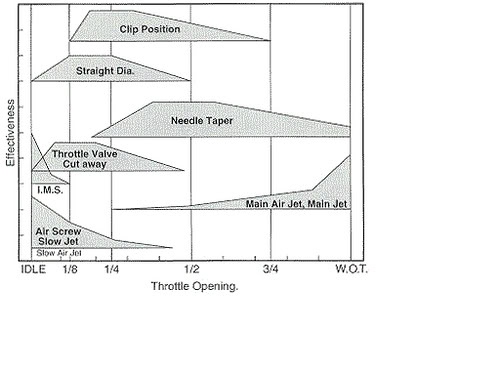not bad man, but 1 issue with this......when u tested it the first time the airscrew on that carb was turned out 2 1/2 turns...thats how many times u turned the screw back in..then u turned the airscrew out 1 1/4 turns out after it was seated....isnt that airscrew being out 2 1/2 turns the reason it was all boggy...way too much air ??
Myself and George Pranis( 30 years of engine building, carb tuning,and track time) will go over the air screw in detail
I did not want to give the exact main jet size that we ended up with, there are many factors and didnt want anyone to make such changes that we had to do without more time spent in carb help.
The main jet went all the way down to 210

